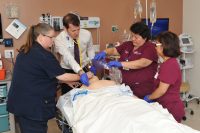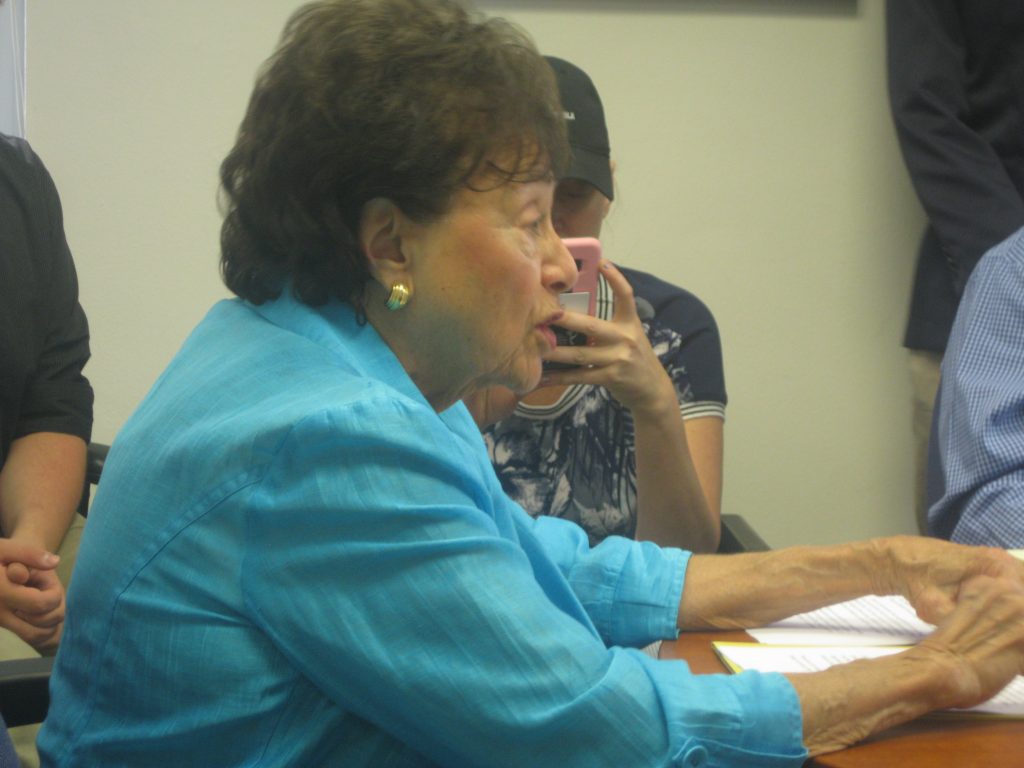Medical Teams Learn to Hone Their Skills at the White Plains Hospital Simulation Lab

By Silas White – In the medical world, there are no do-overs, and some cases are literally life and death. At White Plains Hospital, however, professional teams of nurses, physicians and nursing technicians have been given the opportunity to hone their skills in a safe environment.
White Plains Hospital unveiled its new simulation lab in May, where teams of medical professionals work to diagnose a high tech mannequin capable of sweating, bleeding, blinking and other realistic bodily functions. Beyond practicing medical skills, the teams also practice communication.
“Most simulation labs at teaching hospitals are used to train one group—whether its physicians or nurses,” says Farrukh Jafri, MD RDMS, Assistant Director of Education and Simulation in the Emergency Department of White Plains Hospital. “But, what we’re doing at White Plains Hospital is bringing our full staff together to run high-risk scenarios that are about more than just the medicine. They focus on how we can better work together to advance outcomes.”
According to Dr. Jafri, communication is vital to emergency care. An important aspect of the simulation lab, Jafri said, is that it allows nurses and physicians to practice high risk, low frequency procedures, such as intubating an airway.
“We’re not really teaching, a lot of the people we’re training have been practicing medicine for 20 to 30 years,” he said. “It’s mostly learning from each other…we’re also using a lot of new technology to perform procedures people have been doing for a long time to make sure everyone knows the new technology but also learns from each other. Even though I’m teaching the course I feel I’ve learned a significant amount from other people.”
A simulation lab group usually consists of five to six staff members that would reflect a typical ER team—physicians, nurses, physician’s assistants, and nursing technicians. The team is sent an online module to review in advance. Then, they run through a case featuring volunteers who act as concerned family members along with the high tech mannequin that the team races to diagnose and treat.
“Our first focus is on sepsis, which is a monster of an illness in regards to its mortality, and it can be difficult to diagnose,” Jafri said. “We basically have a high risk sepsis case we run, and then afterward we discuss how the case was run, which is fantastic because it’s actually the area where most of the knowledge and education gets shared amongst the staff.”
According to Jafri, communication is the most important skill the simulation lab teaches.
“No matter what you do, most errors come from communication,” said Jafri. “So we’re not only focusing on diseases and resuscitations but how we are communicating as a team and how we can improve our team communication.”
According to Jennifer Whitley, an emergency room nurse at White Plains Hospital who participated in a simulation lab, she is already reaping the benefits.
“I had a real life patient who came in with sepsis just the other day,” Whitley said. “You just have those things more fresh in your mind, you can refer back to (the lab) because you were physically there. I mean we read information also and watch videos, but nothing compares to going through the scenario.”
The simulation lab will also advance medical education among pre-med students. In addition, the lab will be utilized for a college student intern program, and will eventually offer community lifesaving courses, such as pediatric life support and the Stop the Bleed campaign.

Examiner Media – Keeping you informed with professionally-reported local news, features, and sports coverage.


